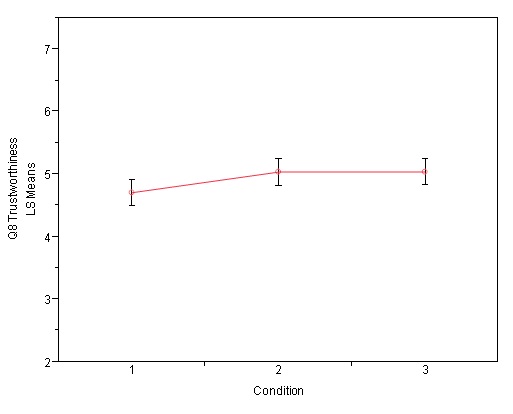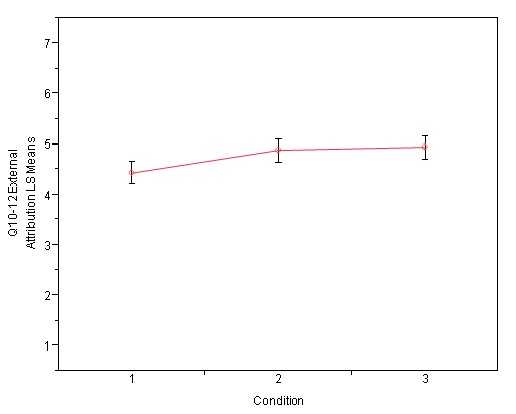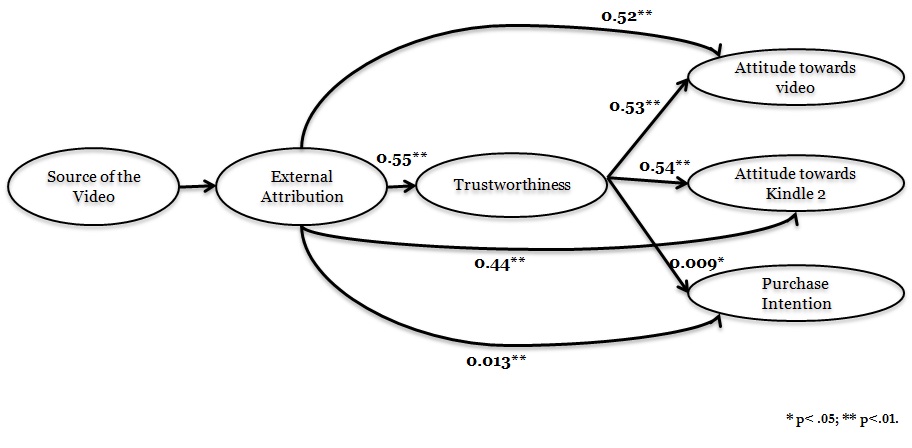Media Effects Research Lab - Research Archive
Perceptions of online source characteristics
Student Researcher(s)
Dou, X. (Ph.D Candidate);
Walden, J. (Ph.D Candidate);
Lee, S. (Masters Candidate);
Lee, J.Y. (Masters Candidate);
Faculty Supervisor
INTRODUCTION
With Web 2.0 technologies giving people new abilities to publish product reviews and other forms of content, this paper attempts to answer several questions about online sources. Drawing upon the source credibility model, attribution theory and recent conceptualizations of user-generated content, this study attempts to examine how the identity of sources for a product review posted on YouTube could influence people’s product judgments
RESEARCH QUESTION / HYPOTHESES
Previous source credibility studies indicate that people have different perceptions toward communicators (source) depending on who they are. In addition, high source credibility induces more message acceptance than low source credibility.
H1a: People will perceive the reviewer in the video made by a general user and an independent product review site more trustworthy than the reviewer in the video made by the company.
H1b: People will perceive the reviewer in the video made by independent product review site having more expertise than the reviewer in the video made by the company and a general user.
H1c: Trustworthiness will positively correlate with product judgments (attitude towards video, attitude towards product, and purchase intention).
H1d: Expertise will positively correlate with product judgments (attitude towards video, attitude towards product, and purchase intention).
H1e: Trustworthiness and expertise will mediate between source and product judgments (attitude towards video, attitude towards product, and purchase intention).
Previous studies about attribution theory indicate that people make two types of attribution when they evaluate why a communicator behaves a certain way. For example, when people see a product review posted on online, people might think that the review was made because the product indeed has good value (external attribution). However, some people might think that the review was made because the reviewer has internal reasons, such as receiving incentives that has nothing to do with the performance of actual products (internal attribution). In general, when people attribute communicator’s behaviors to external motivation, they have better message acceptance and positive attitude toward the reviewed products.
H2a: Participants exposed to a product review video made by a user and an independent product review site will be more likely to attribute the reviewer’s motivation toward external (or product-related) motivation than those exposed to the review made by the company.
H2b: Participants exposed to a product review site made by a user and an independent product review site will be less likely to attribute the review toward the internal (or non-product related) motivation than those exposed to the review made by the company.
H2c: External attribution will positively correlate with product judgments (attitude towards video, attitude towards product, and purchase intention).
H2d: Internal attribution will negatively correlate with product judgments (attitude towards video, attitude towards product, and purchase intention).
H2e: External and internal attribution will mediate between source and product judgments (attitude towards video, attitude towards product, and purchase intention).
METHOD
In this study, participants (N=250) were randomly assigned to one of three conditions in which they viewed a video about Amazon’s new Kindle 2, which is a wireless device that enables users to read newspapers, books, and other print material. The video content remained the same across all three conditions. However, participants were told that the video was produced either by a regular Kindle 2 user, an independent product review website, or by the product maker (Amazon). After viewing the video, participants answered questions about how they perceive the credibility of the reviewer and the reviewer’s motivation for producing the video. In addition, participants’ attitudes toward the video, Kindle 2, and their purchase intentions were measured to evaluate product judgment.
RESULTS
One-way ANOVAs were used to test hypotheses 1a, 1b, 2a, and 2b. Simple linear regressions were employed as the statistical analysis for hypotheses 1c, 1d, 2c and 2d. Causal steps approach was used in the evaluation of hypotheses 1e and 2e.
H1a: Supported. Participants perceived the reviewer in the video made by an independent product review site and a general Kindle 2 user more trustworthy than the reviewer in the video made by the product maker, F (2, 246) = 3.24, p < .05.

H1b: Rejected. The source did not influence participants’ perceived expertise on the reviewer in the video.
H2a: Supported. Participants attributed the reviewer’s motivation of producing the video to external reasons more when they were told that the video was made by an independent product review site and a general Kindle 2 user than participants who were told that the video was made by the product maker, F (2, 246) = 5.78, p<.01.

H2b: Rejected. The statistics failed to show any significant effects of source on internal attribution.
H1c: Supported. This statistical analysis reveals significant effects of trustworthiness on attitude towards video, β = .53, p<.01, attitude towards Kindle 2, β = .42, p<.01, and purchase intention, β = .01, p<.01.
H1d: Partially supported. Significant effects of expertise were also found on attitude towards video and attitude towards Kindle 2. However, no significant effect of expertise on purchase intention was found.
H2c: Supported. Statistical analysis reveals significant effects of external attribution on attitude towards video β = .52, p<.01, attitude towards Kindle 2, β = .44, p<.01, and purchase intention, β = .01, p<.01.
H2d: Partially supported. Significant effects were also found for internal attribution on attitude towards video, β = -.13, p<.01, and attitude towards Kindle 2, β = -.10, p<.01. However, the results did not reveal any significant effect of internal attribution on purchase intention.
H1e & H2e: Partially supported. When the effect of trustworthiness or external attribution on product judgments controlled, the effect of source on three variables of product judgments decreased. However, the perfect mediation was not found in other paths.

CONCLUSION
This study suggests that product reviews or descriptions made by regular consumers in the form of user-generated content are associated with positive product judgments. The authors argue that when a reviewer is perceived to have more credibility and when a review is apparently made for genuine purposes, then the consumer will have more positive attitudes toward the video and product.
For more details regarding the study contact
Dr. S. Shyam Sundar by e-mail at sss12@psu.edu or by telephone at (814) 865-2173

